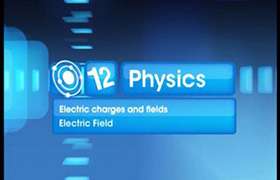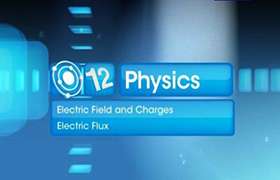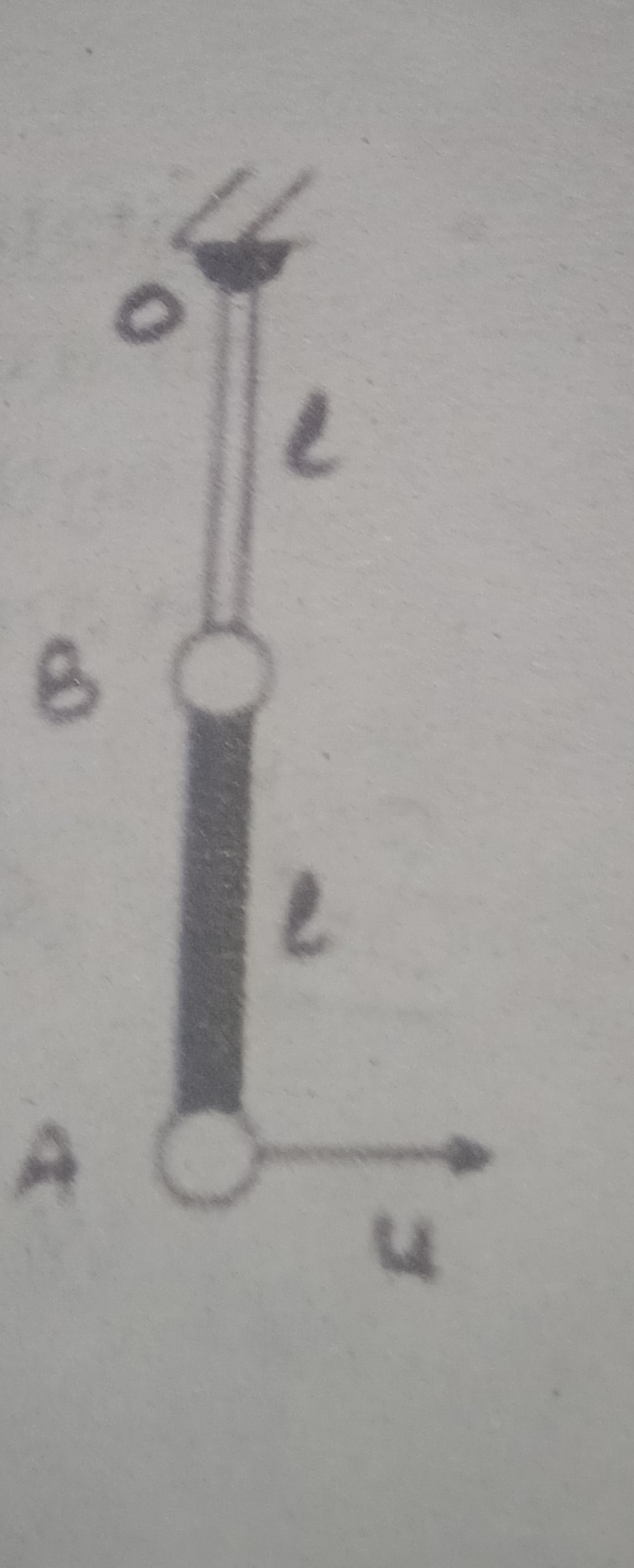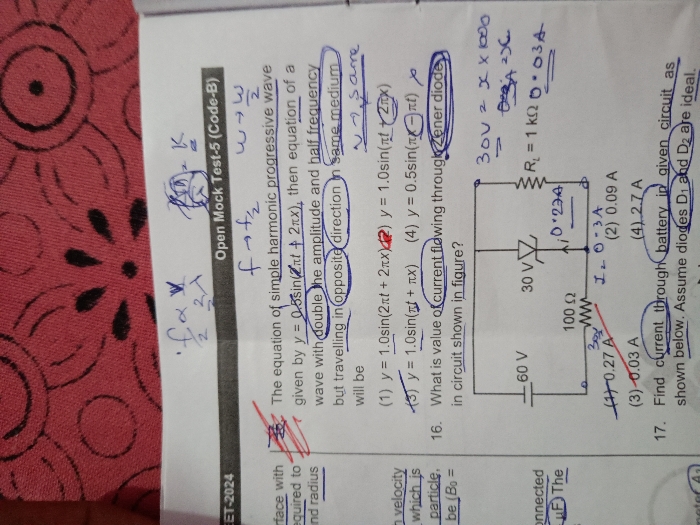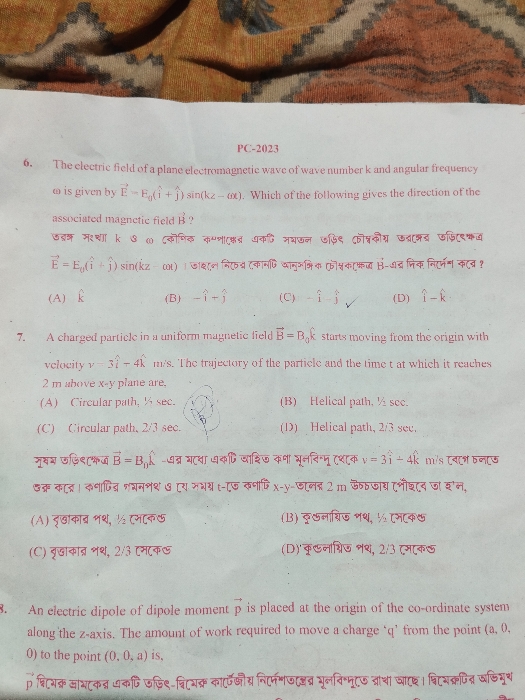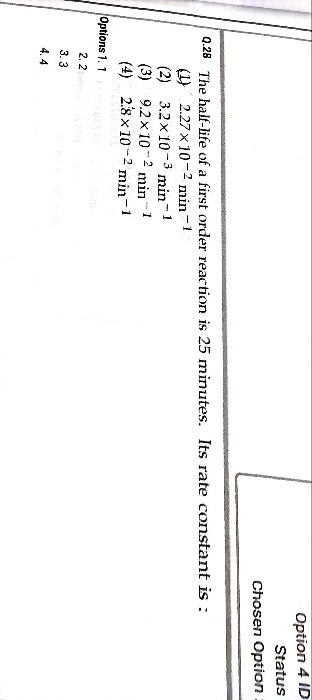CBSE Class 12-science Answered
Young double slit experiment derivation
Asked by Kaushalprince3105 | 16 Feb, 2019, 04:33: PM
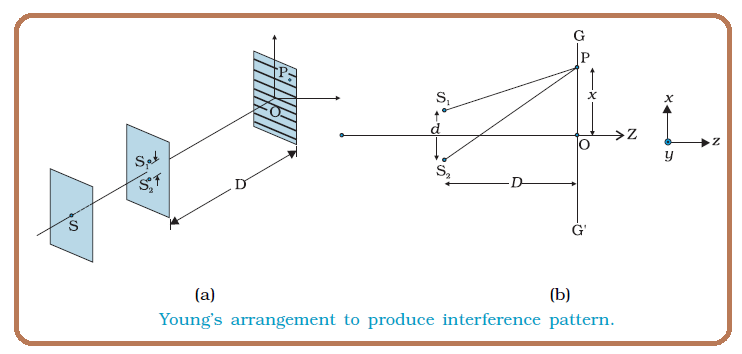
In Young's double slit experiment, two pinholes S1 and S2 (very close to each other) were made on an opaque screen [Fig. (a)].
These were illuminated by another pinholes that was in turn, lit by a bright source. Light waves spread out from S and fall on both S1 and S2.
S1 and S2 then behave like two coherent sources because light waves coming out from S1 and S2 are derived from the
same original source and any abrupt phase change in S will manifest in exactly similar phase changes in the light coming out from S1 and S2.
S1 and S2 then behave like two coherent sources because light waves coming out from S1 and S2 are derived from the
same original source and any abrupt phase change in S will manifest in exactly similar phase changes in the light coming out from S1 and S2.
Thus spherical waves emanating from S1 and S2 will produce interference fringes on the screen GG′, as shown in Fig. (b).
If An arbitrary point P on the line GG′ [Fig. (b)] to correspond to a maximum, then we must have
S2P – S1P = nλ; n = 0, 1, 2 ......................... (1)
Now,

where S1S2 = d and OP = x, then we have 

If x, d<<D then negligible error will be introduced if S2P + S1P (in the denominator) is replaced by 2D in eqn.(3).
Hence Eq. (3 ) becomes
 ........................(4)
........................(4)Hence we will have constructive interference resulting in a bright region when
 ..................................(5)
..................................(5)On the other hand, we will have a dark region when
 .........................(6)
.........................(6)Thus dark and bright bands appear on the screen. Such bands are called fringes. Equations (5) and (6)
show that dark and bright fringes are equally spaced and the distance between two consecutive bright and dark fringes is given by

which is the expression for the fringe width.
Answered by Thiyagarajan K | 17 Feb, 2019, 11:11: AM
Concept Videos
CBSE 12-science - Physics
Asked by artabandhusahu85 | 24 Apr, 2024, 12:07: PM
CBSE 12-science - Physics
Asked by niharvijayvargiya5 | 23 Apr, 2024, 06:40: PM
CBSE 12-science - Physics
Asked by kulhariabhijeet | 21 Apr, 2024, 02:39: PM
CBSE 12-science - Physics
Asked by mohapatraswetalina88 | 21 Apr, 2024, 12:18: PM
CBSE 12-science - Physics
Asked by aishaisha091098 | 19 Apr, 2024, 04:54: PM
CBSE 12-science - Physics
Asked by dasrituparna1999 | 13 Apr, 2024, 06:56: AM
CBSE 12-science - Physics
Asked by dasrituparna1999 | 12 Apr, 2024, 09:26: PM
CBSE 12-science - Physics
Asked by mishrigupta19319 | 08 Apr, 2024, 06:28: PM
CBSE 12-science - Physics
Asked by madhav9119887644 | 07 Apr, 2024, 08:10: PM




